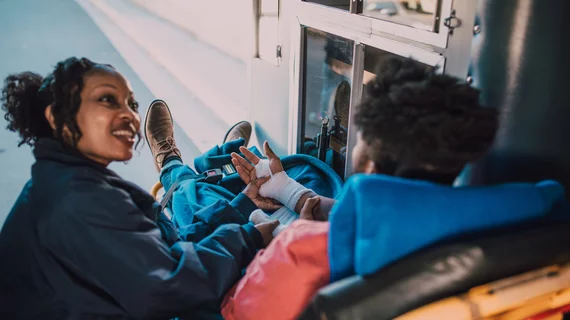Rising trauma CT utilization flagged over costs, incidental findings
Over an eight-year window ending in 2018, emergency departments markedly increased U.S. healthcare’s utilization of chest and abdominopelvic CT for commercially insured trauma patients.
The researchers who uncovered the pattern found the rise especially conspicuous in single-encounter chest/abdominopelvic scans, not least those performed for minor injuries.
The study was conducted at Emory University School of Medicine in Atlanta, supported by the Harvey L. Neiman Health Policy Institute and published in the February edition of the American Journal of Roentgenology [1].
Analyzing 8.4 million commercial claims in MarketScan research databases, radiologists Ninad Salastekar, MBBS, MPH, Tarek Hanna, MD, and colleagues found chest and abdominopelvic CT exams per 1,000 trauma-related ED encounters swelled from 3.4 in 2011 to 8.9 in 2018.
The increase was steeper for single-encounter chest and abdominopelvic exams than for chest CT alone or abdominopelvic CT alone.
Further, the growth was more dramatic for minor trauma than for intermediate or major trauma.
“Given cost and incidental finding detection with CT, strategies are needed to optimize order appropriateness,” Salastekar and co-authors comment.
The team computed utilization according to trauma-related encounters rather than by covered individuals.
This approach ensures that the utilization hikes owe not to ebbs and flows in ED encounters but to “a greater likelihood of performance of CT during such encounters,” the researchers point out.
The increase in CT utilization per encounter “raises concern about the appropriateness of such imaging and adherence to practice guidelines,” Salastekar et al. remark. “In addition, with the increase in use of CT, we anticipate associated increases in cost and detection of incidental findings.”
More:
Strategies such as clinical decision support may be warranted to guide referring physicians in ordering of CT of the chest, abdomen or pelvis for trauma evaluation, particularly for single-encounter chest and abdominal CT examinations for minor trauma.”

